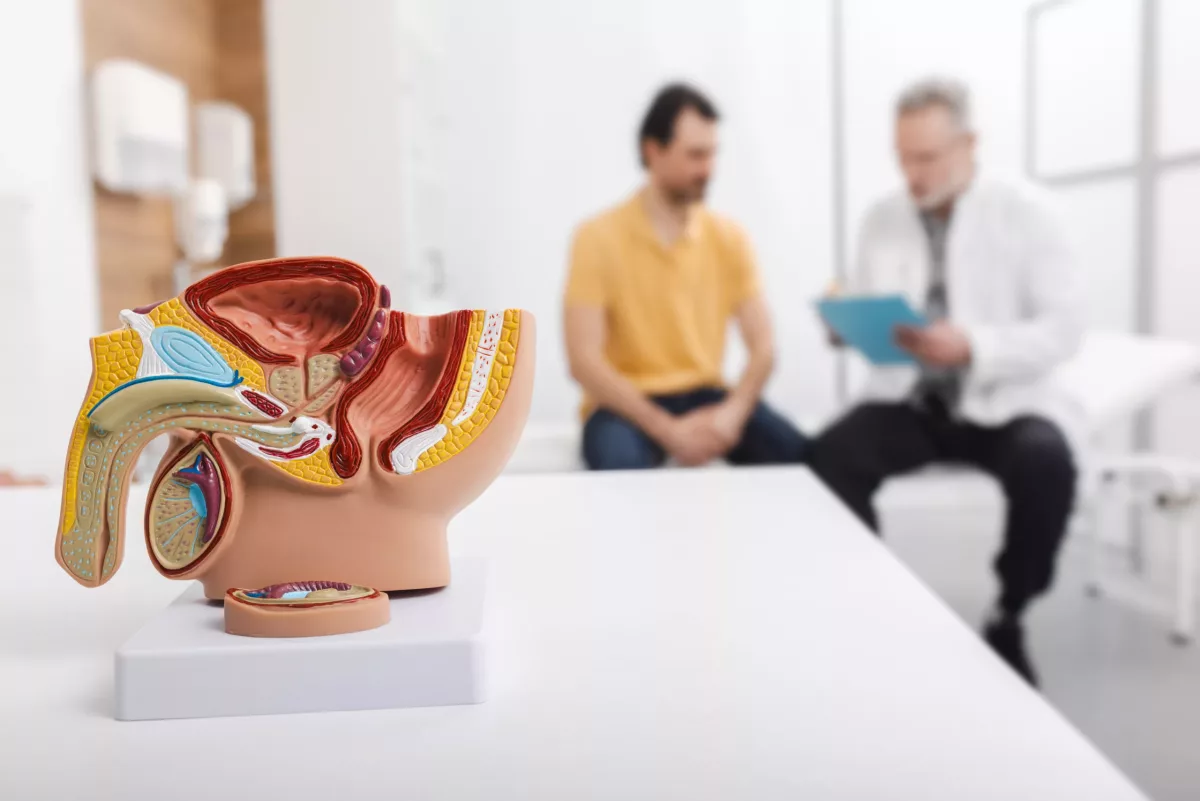A condition in which a testicle does not move down into its correct place (in the scrotum) before birth is called an undescended testicle. In some cases, it is called cryptorchidism. While it often affects only one testicle, it may affect both testicles (rarely). The scrotum is a bag of skin that hands below the penis.
The risk of developing an undescended testicle increases in premature babies. Commonly, an undescended testicle moves down within a few months after birth. When the condition does not go away on its own, doctors recommend surgery to move the testicle into the scrotum.
Symptoms
The primary symptom of this condition is not seeing or feeling the testicle in the scrotum. During pregnancy, the testicles are formed in the lower abdomen. Thereafter, they move down from the stomach region to the scrotum through the inguinal canal (a passage in the groin). In babies with this condition, the process where the testicles move to the scrotum is delayed or stopped.
Healthcare professionals usually detect an undescended testicle within a few weeks after birth. When the testicle does not move into the scrotum within 3 to 4 months of age, it is advised to see a doctor.
Without treatment, this condition may cause certain problems later in life, including cancer of the testicles, infertility, and others.
When it seems like a testicle is missing, it may be a symptom of the following health problems. For example:
- A retractile testicle – It happens when the testicle moves back and forth between the scrotum and groin. However, doctors easily guide the testicle by hand during a physical examination. This condition often happens due to a muscle reflex in the scrotum.
- An ascending testicle – In such cases, the testicle returns to the groin. Therefore, when an ascending testicle occurs, it cannot be guided by hand into the scrotum. Sometimes, this condition is called an acquired undescended testicle.
Do not hesitate to contact your healthcare professional if you notice changes in the genital area of your baby.
Causes
Experts do not fully understand why an undescended testicle occurs. However, they think genetics, health of the biological mother, and other factors can cause the condition. Development of the testicles can also be affected by hormonal imbalances, physical changes, and nerve activity.
Risk Factors
While it is not possible to determine the exact cause of an undescended testicle, doctors have identified some factors that could elevate the risk of your baby for this condition. Check below some examples:
- Premature birth
- Certain health conditions in the baby (including problems with the abdominal wall, cerebral palsy, and others)
- A family history of undescended testicles
- Low birth weight
- Diabetes before or during pregnancy
- Alcohol use during pregnancy
- Exposure to some pesticides during pregnancy
- Smoking or secondhand smoke during pregnancy
Complications
The temperature of the testicles should be slightly lower than regular body temperature for their proper development and function. Check below some complications that may occur when the testicle is not located in the scrotum:
- Cancer of the testicles – People with undescended testicles have an increased risk of developing testicular cancer. The abnormal cells often begin to develop in the cells that produce immature sperm. Healthcare providers do not fully understand why it happens. The risk of this complication increases even more if the testicles are located in the stomach area. To reduce the risk of this type of cancer, doctors often recommend surgery.
- Infertility – If this condition is not treated until adulthood, it may lead to fertility problems. In other words, it may be difficult to make your partner pregnant.
Additionally, certain health conditions are often linked with undescended testicles. These include:
- Testicular torsion – This is a condition in which twisting of the cord that supplies the scrotum with blood occurs. It is a painful condition, and without immediate treatment, it may lead to testicle damage and surgery to remove it.
- Trauma – When the testicle is in the groin, it may get damaged from the pressure of the pubic bone.
- Inguinal hernia – A condition in which the intestines push into the groin through a weak spot in the abdominal muscles. As a result, it forms a bulge that causes pain.
Diagnosis
Sometimes, to diagnose this condition, surgery may be needed. Check below some surgeries used to identify and treat an undescended testicle:
- Laparoscopy – This procedure involves a small tube with a lighted camera on the end that is inserted through a small cut (incision) in the abdomen. It often helps identify the testicle in the stomach area. The same procedure can be used to treat the condition. Some people require other surgeries when the testicle cannot be identified during laparoscopy, or the testicle is damaged or dead.
- Open surgery – During this procedure, surgeons make a large cut to look inside the stomach area or groin to find the testicle.
Sometimes, physicians may perform some tests if the baby’s testicles cannot be found after birth. They often perform imaging tests, including ultrasound, MRI (magnetic resonance imaging), or CT (computerized tomography).
Treatment
In general, treatment focuses on moving the undescended testicle into the scrotum. If this condition is treated before age 1, it significantly reduces the risk of further health problems (such as cancer or infertility). However, surgery to fix the condition is recommended by doctors before 18 months of age.
Surgery
Most people with an undescended testicle need surgery to fix it. During this procedure, surgeons will move the testicle into the scrotum (its proper position) and stitch it into place. It is called orchiopexy and can be done through a small incision in the groin, scrotum, or both.
If the testicle is damaged or made of dead tissue, surgeons will remove the dead tissue during surgery. Usually, doctors recommend regular checkups after surgery to make sure the testicle stays in place and develops properly.
Hormone Treatment
Doctors may prescribe a hormone called human chorionic gonadotropin that may help move the testicle into the scrotum. However, they often recommend surgery because this treatment is not as effective as surgery.
Frequently Asked Questions
Is surgery necessary for an undescended testicle?
In most cases, healthcare professionals treat this condition through surgery. This procedure that moves the testicle to its proper position is called orchidopexy. Ideally, this treatment should be done before 18 months of age.
What are the complications of undescended testis?
Babies with this condition may experience some complications. These include inguinal hernia, trauma, infertility, and an increased risk of testicular cancer. Consult with your doctor about ways to reduce the risk of complications of an undescended testicle.
Can you fix an undescended testicle without surgery?
Sometimes, the testicle can move into the scrotum on its own. Some people get shots of human chorionic gonadotropin to fix this problem. However, the most effective way to treat an undescended testicle is surgery. If you have any other questions, ask your healthcare professional.




